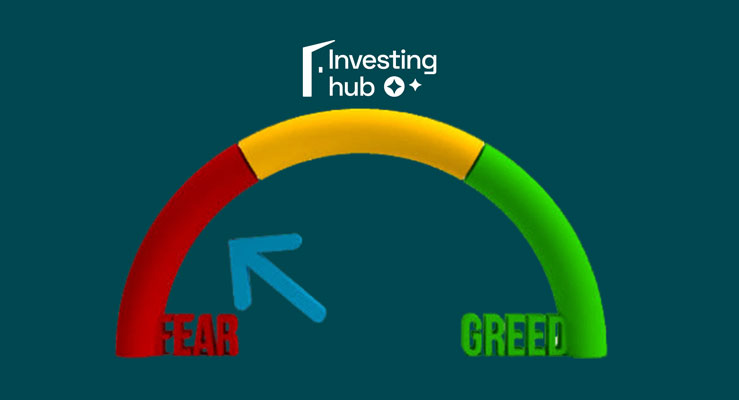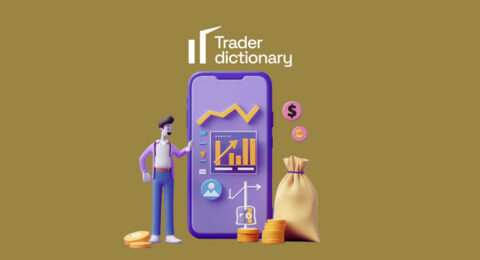Have you ever pondered what psychological elements underlie market fluctuations? “Secrets of the Fear and Greed Index” will unveil a new perspective, enlightening you on how emotions impact investment decisions. This article will explore how top investors leverage the Fear and Greed Index for smarter decision-making, thereby maximizing their profits. We’ll delve into a detailed analysis, examining the real-world effects of this index on the market.
What is the Fear and Greed Index in Crypto?
The Fear and Greed Index in Crypto, often referred to as the market’s “mood meter,” is an indispensable tool for anyone venturing into the volatile cryptocurrency market. It’s a fascinating indicator that reflects the overall sentiment of investors, ranging from caution to profit lust. It’s evident that when the index leans towards “fear,” it might signal market uncertainty and apprehension about the future, leading many to cling tightly to their assets or even panic sell. Conversely, when “greed” takes over, it’s when people are overly confident, ready to make significant bets in hopes of substantial gains. It’s indeed a play of emotions!
But remember, utilizing this index isn’t as straightforward as following the crowd. Oh no, it requires strategy; knowing when to go against the market’s general sentiment is the key to survival and even significant success in the risky world of crypto.
In essence, understanding and applying the Fear and Greed Index in crypto investing not only helps you “read” the market sentiment but also aids in honing risk management skills and making informed investment decisions. Remember, in the investment world, maintaining a steady mindset, not swaying by emotions, is the key to success.
How to Use the Fear and Greed Index in Crypto?
To effectively use the Fear and Greed Index in Crypto, firstly, you need to understand how this index actually works. It’s calculated based on various factors, including price volatility, trading volume, and social media data. Once you grasp its mechanics, the next step is learning how to “read” this index accurately.
It’s crucial to remember that the Fear and Greed Index isn’t a direct buy or sell signal. Instead, it’s a tool to measure market sentiment. When the index is at a high level of “Greed,” it might indicate that the market is overheated, with everyone wanting to buy, and prices might soon adjust. On the flip side, when the index is at a high level of “Fear,” it could be an opportunity to buy when the market is at a lower price point.
However, don’t rush to make decisions based on a single index. Combine it with other technical and fundamental analyses to get a comprehensive view of the market. And another thing, always remember to manage your risk. Never invest more than what you’re willing to lose.
Ultimately, monitoring and reacting to the Fear and Greed Index requires patience and discipline. Don’t let emotions guide your decisions; let data and analysis lead the way. By doing so, you’ll enhance your chances of success in the challenging world of crypto investing.
How is the Fear and Greed Index in Crypto Calculated?
The Fear and Greed Index in Crypto is calculated based on a variety of factors, each carrying a certain weight in the overall formula. Firstly, let’s talk about price volatility, one of the most critical elements. Price volatility is considered over both short and long terms to reflect the market’s stability or fluctuation.
Next, trading volume is also accounted for. A surge in volume might indicate dominance of greed; conversely, a decrease suggests fear might be the prevailing sentiment. Don’t forget the social media factor – posts, comments, and discussions on social platforms also contribute to assessing the market’s overall mood.
Other technical indicators are equally important, such as support and resistance levels, chart patterns, and trend indicators. Each of these elements is carefully analyzed to determine whether the market is leaning towards fear or greed.
Lastly, the overall market sentiment cannot be ignored. Surveys, reports, and sentiment indices are used to “measure” the emotions of investors and traders. When all these factors are combined, they create a comprehensive picture of the current market sentiment, thus aiding investors in making smarter decisions.
How to Control Emotions When Investing?
1. Fear when others are greedy and greed when others are fearful
Fear when others are greedy and greed when others are fearful – a classic investment principle shared by Warren Buffett, provides deep insights into managing emotions and leveraging crowd psychology in investing.
- Emotion Management: Don’t let yourself get swept up in the market’s collective emotions. When everyone around you is greedy, that may be the time to be cautious and vigilant.
- Identify Market Signals: Pay attention to signs indicating the market may be overheated or overly cold. Use technical indicators and fundamental analysis to support your decisions.
- Seize Opportunities: When the market is in a state of fear, it could be the time to seek value investment opportunities at more reasonable prices.
- Long-Term vs. Short-Term: Clearly define your investment goals as long-term or short-term and use this principle appropriately.
- Risk Management: Whether you choose a greedy or fearful approach, risk management is always crucial. Never invest more than you can afford to lose.
- Critical Thinking and Self-Reflection: Sometimes, going against the crowd requires self-examination and critical thinking to ensure you’re not making mistakes in logic or information.
- Stay Informed: The financial world is constantly changing, so always stay updated and reevaluate your investment strategy based on the latest data.
Remember that applying these principles requires a cool head, good analytical skills, and courage. Investing is never risk-free, but by understanding and applying these principles correctly, you can increase your chances of success in the market.
2. Using Dollar-Cost Averaging (DCA) Investment Strategy
Using the Dollar-Cost Averaging (DCA) investment strategy can be a smart way to minimize risk during market volatility, especially in the context of fear and greed indicators.
- Basic Concept: DCA is an investment strategy that involves dividing your capital and investing it regularly over time, rather than making a large one-time investment.
- Risk Mitigation: By evenly allocating your investment capital, you reduce the risk of buying at excessively high prices driven by market greed.
- Take Advantage of Market Discounts: When the market is in a state of fear and prices are falling, DCA allows you to purchase more assets with the same amount of money.
- Patience is Key: DCA requires patience and a commitment to long-term investing, unaffected by short-term market fluctuations.
- Automate the Investment Process: You can set up automated purchases to maintain investment discipline and avoid being influenced by emotions.
- Suitable for All Investors: Whether you’re a beginner or an experienced investor, DCA is a suitable and effective strategy.
- Asset Accumulation: DCA helps you gradually build and enhance your investment portfolio without worrying about timing the market.
Remember that no investment strategy is without risk, but DCA is considered a wise approach to minimize the impact of price fluctuations and market emotions on your investment decisions.
3. Diversification
Diversification is a fundamental principle in portfolio management, helping to minimize risk without significantly reducing profit potential.
Asset Allocation: Don’t put all your eggs in one basket. Allocate capital to various asset classes, from stocks and bonds to cryptocurrencies, to reduce risk.
Diversification Across Sectors: Invest in different industries. When one sector faces difficulties, another may still perform well, balancing your investment portfolio.
Geographical Diversification: Invest in financial markets in multiple countries and regions. This helps minimize risk due to local political and economic fluctuations.
Time Diversification: Expand your investment time horizon. Investing in projects with different durations helps reduce timing-related risks.
Diverse Strategies: Combine various investment methods and strategies, from buy-and-hold to short-term trading, to optimize returns and reduce risks.
Periodic Assessment and Adjustment: Regularly assess and adjust your investment portfolio to ensure effective diversification.
Avoid Overdiversification: Be careful not to over-diversify, which can make it challenging to manage your investments effectively.
Remember that the goal of diversification is not to eliminate risk entirely but to manage it intelligently, ensuring financial security in any market conditions.
Advantages of Using Fear and Greed Indicators
Using fear and greed indicators offers several important advantages for investors, helping them make smarter decisions based on market psychology.
- Understanding Market Psychology: These indicators provide deep insights into the market’s collective psychology, helping investors identify when the market is overly greedy or fearful. Consequently, you can assess the level of risk and existing opportunities.
- Informed Investment Decisions: By recognizing the dominant emotions in the market, you can avoid making decisions based on personal emotions and instead rely on objective analysis and evaluation.
- Optimizing Entry Points: Using these indicators can help investors identify the best “buy” and “sell” points by recognizing when the market may be at its peak (due to greed) or its low point (due to fear).
- Risk Mitigation: When you know when the market is too greedy, investors can exercise more caution and avoid “buying high.” Conversely, when the market is overly fearful, it may be an opportunity to “buy low” and reduce the risk of buying at high prices.
- Enhanced Investment Efficiency: Utilizing information from fear and greed indicators to make investment decisions can enhance the return on investment portfolios, as it allows investors to avoid investing based solely on crowd sentiment rather than market analysis.
In summary, fear and greed indicators are useful tools for investors to recognize market opportunities and risks based on the collective psychology of investors. Using these indicators intelligently can help you make more accurate investment decisions, relying on an understanding of market sentiment rather than personal emotions.
Disadvantages of Using Fear and Greed Indicators
While using fear and greed indicators offers many benefits, it’s essential to acknowledge the potential drawbacks associated with their use.
- Dependence on Market Emotions: These indicators heavily rely on crowd psychology and may not always accurately reflect the fundamental value of assets. This can lead to decisions not based on thorough analysis.
- Delayed Information: Sometimes, fear and greed indicators may lag in reflecting market sentiment, causing investors to miss opportunities or not timely adjust their investment portfolios.
- Limited Predictive Ability: These indicators do not consistently predict future market movements accurately. The market can continue to rise even when the indicators suggest high greed, and vice versa.
- Psychological Herd Behavior: Relying on these indicators can lead investors into the trap of herd behavior, especially when they place too much trust in the indicators without considering other factors.
- Not Suitable for Every Strategy: For value-oriented or long-term investors, fear and greed indicators may not provide as much value, as they focus more on market psychology than fundamental analysis.
- Requires Complementary Tools: To make effective investment decisions, relying solely on fear and greed indicators may not be enough. Combining them with technical analysis, fundamental analysis, and other evaluation tools is essential.
In conclusion, while fear and greed indicators are valuable for understanding market psychology and supporting investment decisions, investors should use them cautiously and in conjunction with other analyses to ensure accurate and effective investment decisions.
Conclusion
In conclusion, a profound understanding of fear and greed indicators helps investors make wise decisions and avoid the traps of emotions. Investing based on analysis, not emotions, is the key to success.”
Please share your investment story with our community and let’s learn together!









